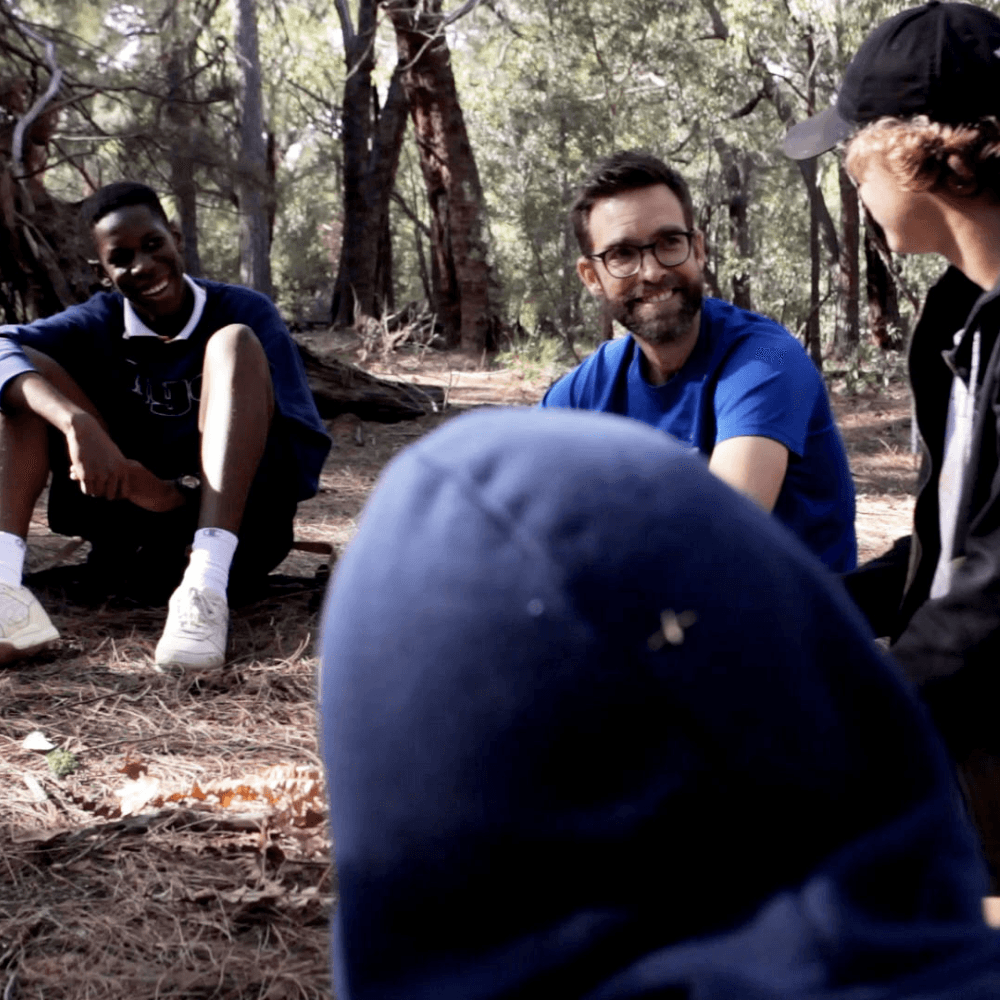Before young people can learn, they need to feel like they belong.
You stand in front of a room full of students. You ask a question, hoping to spark energy and discussion. Instead, your question hangs in the air, answered by nothing but silence. Eyes drop to the floor. A few students shuffle in their seats. After a long uncomfortable pause, you call on someone by name, and they reluctantly mumble an answer, wishing the spotlight would pass as quickly as possible.
It’s not that they don’t know anything. It’s not that they don’t care. What you’re experiencing is a group that feels guarded and disconnected. Individuals unsure if it’s safe to speak up, uncertain about their place in the room, and unwilling to risk putting themselves out there.
It’s easy to blame this experience on lazy, disengaged students. However, it is far more likely to be the environment that has been created. Before people can engage with content, they need to feel connected and safe. Without that, the default is quiet, hesitant, and disengaged.
That’s why connection always comes before content. True connection activities that are thoughtful, inclusive, and low-pressure shift the room. They replace anxiety with laughter, isolation with belonging, and hesitation with curiosity. They’re not about filling time or ticking a box. They’re about creating the conditions where real learning and growth can take root.
Are We Just Having Fun?
It’s easy to dismiss games and activities as nothing more than playful distractions,something to fill time, break up the day, or keep energy levels up. And yes, sometimes they are just that: a chance to laugh, move, and bring lightness into the room. That has value on its own.
But the right activities can go much deeper. When chosen intentionally, they help people feel seen, safe, and connected—especially in groups where students don’t yet know each other or where trust hasn’t been built. These moments are not wasted time; they’re laying the groundwork for real learning.
Connection activities are purposeful. They lower anxiety, create shared experiences, and build a sense of belonging. Instead of guarded silence, you get openness. Instead of hesitation, you see engagement. By using them early and often, you’re not just “playing games”, you’re setting the tone for meaningful collaboration, deeper reflection, and genuine growth.
Connection: The Foundation of Learning
Research consistently shows that a student’s sense of belonging in school is deeply linked to motivation, wellbeing, and academic success. When students feel unseen, isolated, or judged, they switch to performance mode: guarded, hesitant, and disengaged. The result? Surface-level participation and filtered presence, not real learning.
Research shows that students who experience belonging, feeling valued and included, demonstrate higher effort, motivation, and engagement; they report stronger mental health and academic outcomes.
Ice-Breakers vs. Ice-Makers
Not all connection activities are created equal. The right ones lower anxiety, invite laughter, and make it easy for people to share at their own pace. The wrong ones, however, can actually create more distance. We call these ice-makers. They tend to spotlight individuals too early, put people on the spot, or create unnecessary pressure, think of the classic “go around the room and share a fun fact.” Instead of warming people up, these activities raise defenses.
True ice-breakers are different: they are low-pressure, inclusive, and collaborative. They focus on shared success rather than individual performance, making everyone feel part of the group. Choosing the right activity for the right moment is an art. It requires reading the room, skilled facilitation, and a toolkit of connection-based activities that build trust rather than tension. Effective facilitators assess the room and choose wisely. The best activities are:
- Low-pressure—no winners or losers
- Inclusive—accessible to everyone
- Collaborative—focus on shared success
- Flexible—adaptable to the group’s comfort level
Sprinkle them throughout,not just at the start of a session.
Why It Really Matters
Globally, many students are sitting in classrooms without feeling like they truly belong. OECD data shows that nearly one-third of 15-year-olds report feeling like outsiders at school. When students feel disconnected, they don’t just withdraw socially, they can also disengage academically.
Belonging sets the stage for learning. Before students can take intellectual risks, share openly, or dive into challenging content, they need to feel safe, seen, and included. Connection lowers anxiety, builds trust, and opens the door to curiosity.
When teachers and peers create environments of belonging, students are more willing to participate, ask questions, and explore ideas deeply. In other words, connection isn’t an “extra”, it’s the foundation that makes meaningful learning possible.
Belonging isn’t just a warm feeling. It’s the fuel that powers engagement, collaboration, and growth. Without it, content falls flat. With it, learning comes alive.
How AdventureWorks WA Transforms Connection
At AdventureWorks WA, we don’t just play games, we weave connection before content into everything we do. Our tools and programs are designed to help young people:
- Feel seen, heard, and valued first
- Build empathy through shared storytelling and reflection
- Connect through cooperative, inclusive experiences in nature
- Learn to listen before leading, engage before performing
This foundation creates space for real learning, emotional growth, and purpose. Because you can’t teach a thriving mind if it feels unseen or alone.
Takeaway: Tips for Educators, Parents, and Leaders
- Start with intention. Choose connection activities that lower guards, not raise them.
- Interact often. Connect, reset, and reconnect throughout any program, not just at the start.
- Lead with empathy. Encourage sharing of feelings, values, and stories, not just names or facts.
- Cultivate community. Pair belonging-building with both peer and adult support.
Measure belonging. Use surveys or conversations to understand how your students feel connected, then act on gaps.
Belonging before learning isn’t a catchy motto, it’s a proven path. When young people feel like they belong, not just belong to get it over with, they begin to learn with curiosity, confidence, and openness.
Let’s create classrooms and programs where every young person knows they’re seen, valued, and welcome.





